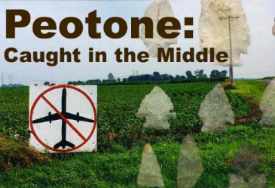 |
| An Overview |
| By David "Stone" Sweet |
|
Surprising things can be found in out of the way places. Things one would not expect to find, much less imagine might be found in abundance...The town of Peotone, Illinois is such an out of the way place. Nestled among the rolling hills of corn, soybeans and wheat, Peotone lies just about 50 miles south of Chicago. Peotone is a distinctly small town with a small town atmosphere. In this rural setting, the city and its bright lights and sounds it seems, are a long, long way off....There are several diners and eateries in town, and the customers who frequent these are well known to each other. Business between friends and just plain friendly conversation, not to mention the good down-home cooking, draw the locals in. Everyone knows everyone else, and everyone’s business too – if Peotone is like any other small town across America. The rolling hills surrounding Peotone themselves bear mute testimony to this quiet solitude, this pleasant rural setting, this town of farmers, craftsmen, merchants and their families, their homes and business establishments. These hills bear witness to other things, too. Once covered by glaciers, gone now almost 12,000 years. Compared with what it had once been the land is vastly different now, and within the soils of these hills lies the untold tales of 12,000 years of mans passing. Looking down from high above, satellite photos reveal the ancient remnants of streams and terraces, hills and drainages. These streams are mostly gone now, identified by faint tracings of their original courses their ancient beds filled in with sediments washed from the overlooking hills. Early European settlers coming here found the region to be worth settling in and the land good to farm. But they were not the first, by a long shot – the Indians held this land long before the coming of the white man’s civilization. It was a good land for them, too. The evidence of Indian occupation is, in fact, hardly scarce – farmers and interested collectors have, over the many years since the first settlers arrived, found arrowheads and other stone tools each spring when the plowing began anew. The ancient camps where these artifacts are found occupy nearly every hilltop and rise in the ground – this according to reports from local collectors. In a recent examination of artifacts privately collected and held by local farmers, a surprising circumstance arises – the oldest tool-forms, mostly uniface scrapers and knives, appear in considerable numbers. Further tantalizing to the archaeologist and collector alike are the 6 Clovis projectile points which have thus far been found – these projectile points represent the oldest comprehensively defined culture to occupy North America and date to 12,000 years before the present. Clovis points and related tools have proven to be generally scarce wherever found, and hold clues to the way these ancient people lived. They also provide clues as to the mysteries surrounding the peopling of the Americas. |
|
|